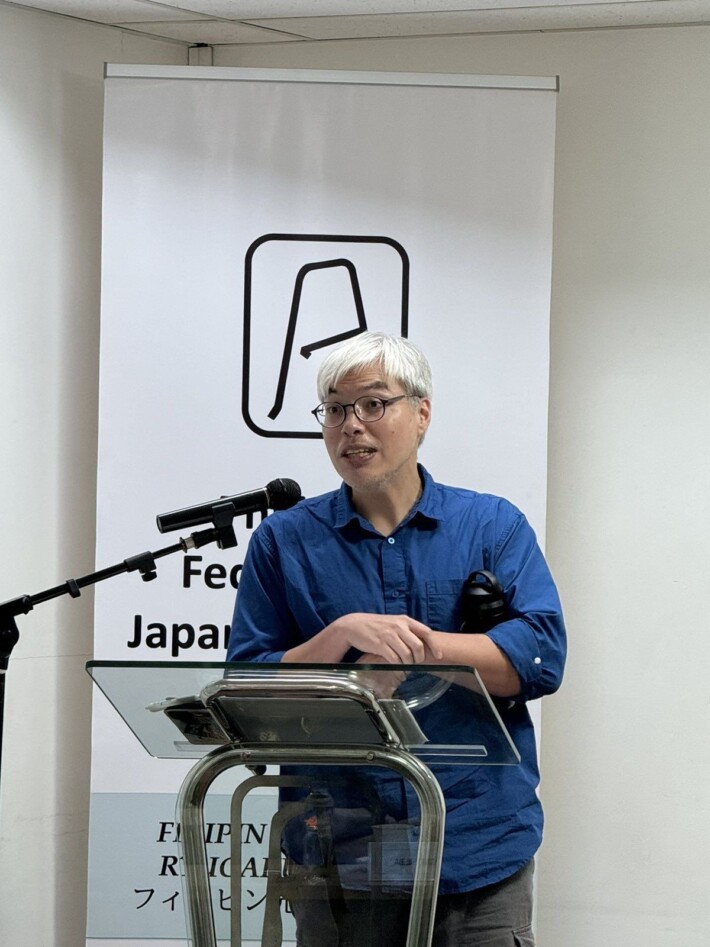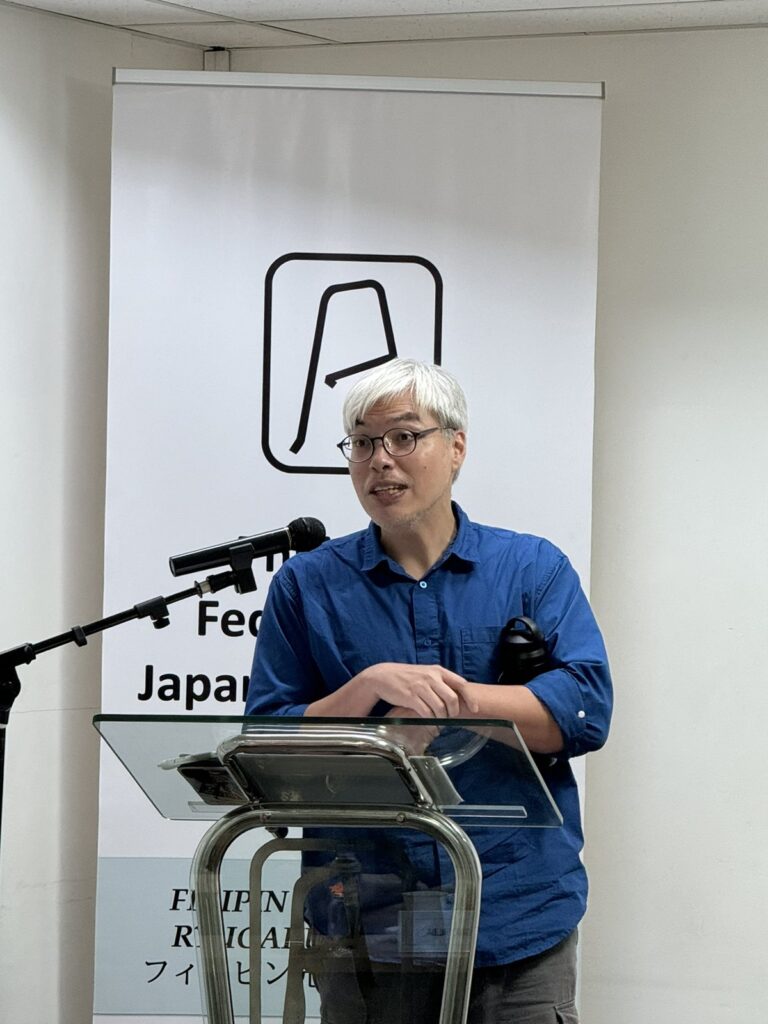On September 28, 2024, the Samahan ng mga Pilipinong Nag-Aral at Nanirahan sa Nippon[1] (SAPILNIP) hosted its inaugural “Nantoku Lecture Series” at the Philippines-Japan Friendship Foundation in Makati City. The lecture was conducted by, Dr. Karl Ian Uy Cheng Chua, Ph.D. a recognized scholar on Asian and Japanese history who delivered a thought-provoking presentation entitled “Aspiring for Meiji Paradise: Philippine Revolutionary Perceptions and Japanese Escape – Turn of the 19th Century Filipino-Japanese Interactions.”
The ”Nantoku Lectures” is an initiative of SAPILNIP spearheaded by descendants of wartime Filipino pensionados to Japan (1943-1945) who were known as the Nanpo Tokubetsu Ryugakusei 南方特別留学生 translated as Special Students from the Southern Areas (“Nantoku” for short). Todate, 45 descendants of the 50 original Filipino Nantoku have established contact with each other (both in person and online), sharing a deep-seated desire to exchange narratives of their fathers and hopefully gain understanding of the historical context, purpose and lifelong relevance of their education in Japan. Indeed, having founded both the Philippine Federation of Japan Alumni (PHILFEJA) and the ASEAN Council of Japan Alumni (ASCOJA), the lives and character of the Nantoku from the Philippines and other Japan-occupied territories in Southeast Asia must have been significantly shaped by their shared experience as foreign students in Japan, albeit under wartime conditions.
Framed along the concept of “Filipino-Japanese Interpersonal Encounters”, Dr. Chua’s lecture delved into major socioeconomic and geopolitical shifts resulting from the vaunted Meiji Restoration beginning 1868. He traced how the the Meiji era successfully cultivated an image of modernization and progress that appealed to many Filipinos, particularly those seeking refuge and opportunity during the turbulent period of their own struggle for independence from Spanish rule. Dr. Chua also challenged the romanticized image of Japan, unveiling how the so-called “monolithic Meiji myth” misled Filipinos at the turn of the century, with hopes of also achieving Japan’s prosperity and political alignment away from its colonial moorings.
Dr. Chua further examined the ‘Myth of Modernity’ associated with Japan’s image as a beacon of progress during the Philippine struggle for independence, which juxtaposed the Japanese diaspora of that period. By placing these experiences within a broader historical context, Dr. Chua highlighted the global socio-political dynamics that shaped Filipino perceptions of Japan and Japanese migration to the Americas, Hawaii and the Philippines. He also drew parallels between the historical struggles of these early migrants and the ongoing challenges faced by contemporary overseas Filipino workers (OFWs).
Corollarily, Filipino revolutionaries and anti-West activists, overwhelmed and sidelined by the superior strengths of subsequent Spanish and American colonialists sought alliances among like-minded Japanese advocates which in hindsight proved illusionary. While there were not a few Japanese sympathizers to the Filipinos’ cause, official Japan could only extend nominal, covert support so as not to antagonize American and European powers in Asia at the turn of the 19th century.
Dr. Chua did not miss to highlight the extended stay in Japan of Dr. Jose P. Rizal who was enchanted by its beautiful land, culture, language and the traditional civility of its people. He also did not forget the Philippine hero’s brief dalliance with Usui Seiko, whose grave is marked in a cemetery in Ikebukuro.
Dr. Chua also touched on the migration of Japanese laborers who helped construct the monumental Kennon Road from La Union to Baguio (1903-1905). Subsequently, those Japanese either migrated to the United States or Davao occasioned by the rise of a fledgling abaca industry.
Following Dr. Chua’s lecture, a Q&A session ensued where attendees engaged in lively discussions on the relevance of historical narratives in understanding contemporary Filipino- Japanese relations. Many expressed a keen interest in how these historical events continue to shape the experiences of Filipinos living and working in Japan and perhaps even in the future.
The Lecture on ‘Aspiring for Meiji Paradise’ kicks off a series of talks and lectures leading up to the 50th Anniversary of PHILFEJA and the 70th year of the Normalization of Philippines-Japan Diplomatic Relations, both of which will be commemorated in 2026. The lecture series aims to highlight significant historical narratives on interpersonal encounters of Filipinos and Japanese that can shed light of sundry snapshots of interesting events considered minor historical footnotes, but which can bring into sharper focus the deep roots of cordial relations between the two peoples. It is hoped that the lectures will contribute to the cultivation of deeper understanding and appreciation of sociopolitical dynamics that continue to shape bilateral relations today and beyond.
[1] Association of Filipinos Who Studied and Lived in Japan / 日本留学・在留フィリピン協会
Dr. Karl Ian Uy Cheng Chua is a professorial lecturer at the Asian Center, University of the Philippines. He teaches a wide range of topics on Japan and Asia at both the University of the Philippines and the Ateneo de Manila University, where he served as Director of the Japanese Studies Program from 2013 to 2020. He obtained his AB Interdisciplinary Studies at the Ateneo de Manila University (2001), Masters in Japanese Studies (2005) and Ph.D. Social Sciences (2010) from Hitotsubashi University in Tokyo.
References:
Dr. Chua’s Paper
Presentation
Photos



